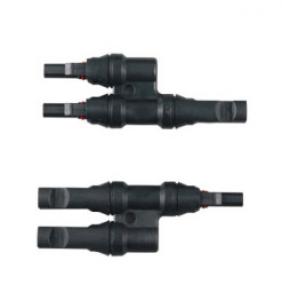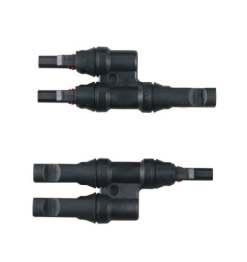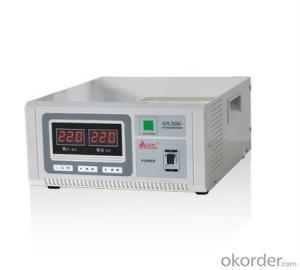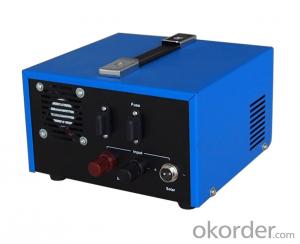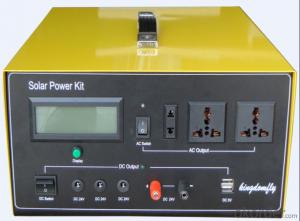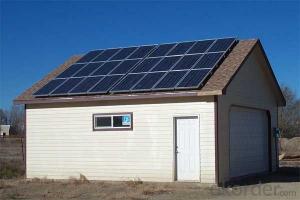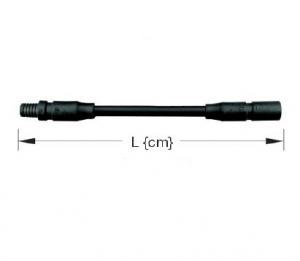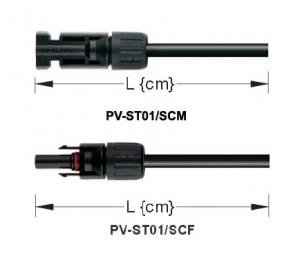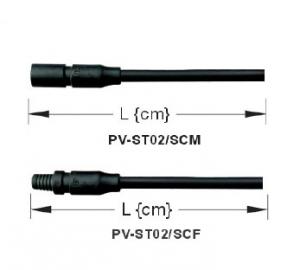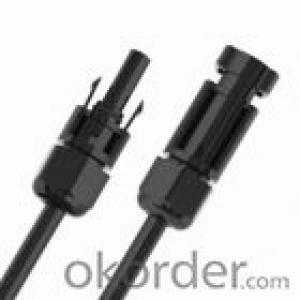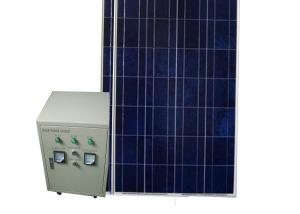Solar Energy Systems of Brevard Inc Solar Cable Connector ST01 S B
- Loading Port:
- China Main Port
- Payment Terms:
- TT OR LC
- Min Order Qty:
- -
- Supply Capability:
- 10000 set/month
OKorder Service Pledge
Quality Product, Order Online Tracking, Timely Delivery
OKorder Financial Service
Credit Rating, Credit Services, Credit Purchasing
You Might Also Like
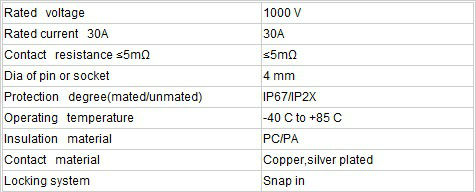
- Q: What is the installation process for a solar energy system?
- The installation process for a solar energy system typically involves several steps. Firstly, a site visit is conducted to assess the roof or ground space for solar panel placement and to determine the solar potential of the location. Then, the necessary permits and paperwork are obtained from the local authorities. Next, the solar panels and related equipment are installed, which includes mounting the panels, connecting the electrical components, and setting up the inverter to convert the DC electricity generated by the panels into usable AC electricity. Finally, the system is inspected and connected to the grid or battery storage, and the homeowner or business owner is educated about the system's operation and maintenance.
- Q: How does a solar energy system work?
- A solar energy system works by capturing sunlight using photovoltaic (PV) panels or solar thermal collectors. The PV panels convert sunlight directly into electricity by using semiconductor materials, while solar thermal collectors use sunlight to heat water or air for various purposes. The electricity generated by the PV panels can be used to power homes or businesses, or it can be stored in batteries for later use. Additionally, excess electricity can be fed back into the grid for credit or sold to utility companies. Overall, solar energy systems harness the power of the sun to provide clean and renewable energy.
- Q: Can solar energy systems be connected to the existing power grid?
- Solar energy systems can indeed be linked to the current power grid, known as grid-tied or grid-connected solar systems. In this configuration, solar panels harness sunlight to generate electricity, which is then converted by inverters into usable AC power. This AC power is then integrated into the existing power grid, effectively supplementing the utility company's electricity supply. Grid-tied solar systems provide multiple advantages. Primarily, they allow homeowners and businesses to decrease their dependence on fossil fuel-based electricity and reduce their carbon footprint. Moreover, any surplus electricity generated by the solar panels can be returned to the grid, resulting in net metering or feed-in tariffs. In this scenario, the excess power is credited to the system owner by the utility company, leading to substantial cost savings or even potential revenue generation. Furthermore, grid-tied systems ensure a reliable and consistent supply of electricity. During periods when the solar panels are unable to generate sufficient power, such as at night or during cloudy weather, electricity can be acquired from the grid. Conversely, when the panels produce more electricity than is being utilized, the surplus is sent back to the grid, guaranteeing an uninterrupted and continuous power supply. It is important to acknowledge that the installation and connection of grid-tied solar systems may necessitate the approval and coordination of the local utility company, as well as adherence to pertinent regulations and safety standards. Nevertheless, the capability to connect solar energy systems to the existing power grid renders them a versatile and advantageous renewable energy solution.
- Q: How does the cleanliness of solar panels affect energy production?
- The cleanliness of solar panels greatly affects energy production. Dust, dirt, pollen, bird droppings, and other forms of debris can accumulate on the surface of the panels, blocking sunlight and reducing their efficiency. Regular cleaning and maintenance of solar panels are necessary to ensure optimal energy output.
- Q: Can a solar energy system be used in areas with high levels of air pollution?
- Yes, a solar energy system can be used in areas with high levels of air pollution. While air pollution can reduce the efficiency of solar panels, it does not completely hinder their ability to generate electricity. Solar energy systems still function and produce power even in polluted areas. However, it is important to note that the efficiency of the system may be slightly reduced due to the reduced amount of sunlight reaching the panels. Regular cleaning and maintenance of the solar panels can help mitigate the impact of air pollution on their performance. Additionally, advancements in solar technology are being made to improve the efficiency of panels in polluted environments, such as the development of anti-soiling coatings that prevent dust and pollutants from sticking to the panels. Overall, even in areas with high levels of air pollution, solar energy systems can still be a viable and sustainable source of electricity.
- Q: Can solar energy systems be used in areas with high levels of bird activity?
- Yes, solar energy systems can be used in areas with high levels of bird activity. However, it is important to take certain precautions to ensure the safety of the birds and the optimal functioning of the solar panels. One common concern is the potential for bird collisions with the panels. To mitigate this, manufacturers often incorporate bird deterrents such as mesh screens or reflective coatings on the panels to make them more visible to birds and reduce the risk of collisions. Additionally, proper installation and maintenance of the solar energy systems can help minimize potential nesting or roosting sites for birds, reducing the likelihood of damage to the panels. By addressing these considerations, solar energy systems can be effectively utilized in areas with high bird activity while still protecting the local avian population.
- Q: How do solar energy systems affect the roof's lifespan?
- Solar energy systems can actually extend the lifespan of a roof. By acting as a protective shield, solar panels can help to reduce the impact of harsh weather conditions such as rain, hail, and UV radiation on the roof. Additionally, solar panels can provide shade and insulation, thereby reducing the temperature fluctuations that can cause wear and tear on the roof. Overall, solar energy systems can contribute to the longevity and durability of the roof.
- Q: Can a solar energy system be installed in areas with low sunlight?
- Yes, a solar energy system can be installed in areas with low sunlight. While it is true that solar panels rely on sunlight to generate electricity, advancements in technology have made it possible for solar systems to still produce energy even in areas with limited sunlight. In regions with low sunlight, solar panels can still capture and convert available sunlight into usable energy. Additionally, some solar systems are designed to optimize energy production by utilizing tracking systems that allow the panels to follow the sun's path throughout the day, maximizing the amount of sunlight they receive. Furthermore, energy storage solutions such as batteries can be incorporated into the solar system, allowing for the storage of excess energy generated during periods of higher sunlight for use during times of lower sunlight. These advancements in solar technology have made it feasible to install solar energy systems in areas with low sunlight, providing clean and renewable energy options to a wider range of regions.
- Q: Can solar energy systems be used in areas with limited access to skilled labor?
- Yes, solar energy systems can be used in areas with limited access to skilled labor. Solar panels are designed to be simple and easy to install, requiring minimal maintenance and technical expertise. Moreover, advancements in technology have led to the availability of plug-and-play solar kits that can be easily installed by anyone, even with limited technical skills. Additionally, there are various training programs and initiatives aimed at educating local communities on solar installation and maintenance, empowering them to adopt and benefit from solar energy systems.
- Q: Can a solar energy system be installed in areas with high humidity?
- Yes, a solar energy system can be installed in areas with high humidity. High humidity may impact the performance of the solar panels to some extent, but modern solar panels are designed to withstand various weather conditions, including high humidity. Proper installation and regular maintenance can ensure the efficiency and durability of the system in such areas.
Send your message to us
Solar Energy Systems of Brevard Inc Solar Cable Connector ST01 S B
- Loading Port:
- China Main Port
- Payment Terms:
- TT OR LC
- Min Order Qty:
- -
- Supply Capability:
- 10000 set/month
OKorder Service Pledge
Quality Product, Order Online Tracking, Timely Delivery
OKorder Financial Service
Credit Rating, Credit Services, Credit Purchasing
Similar products
Hot products
Hot Searches
Related keywords
